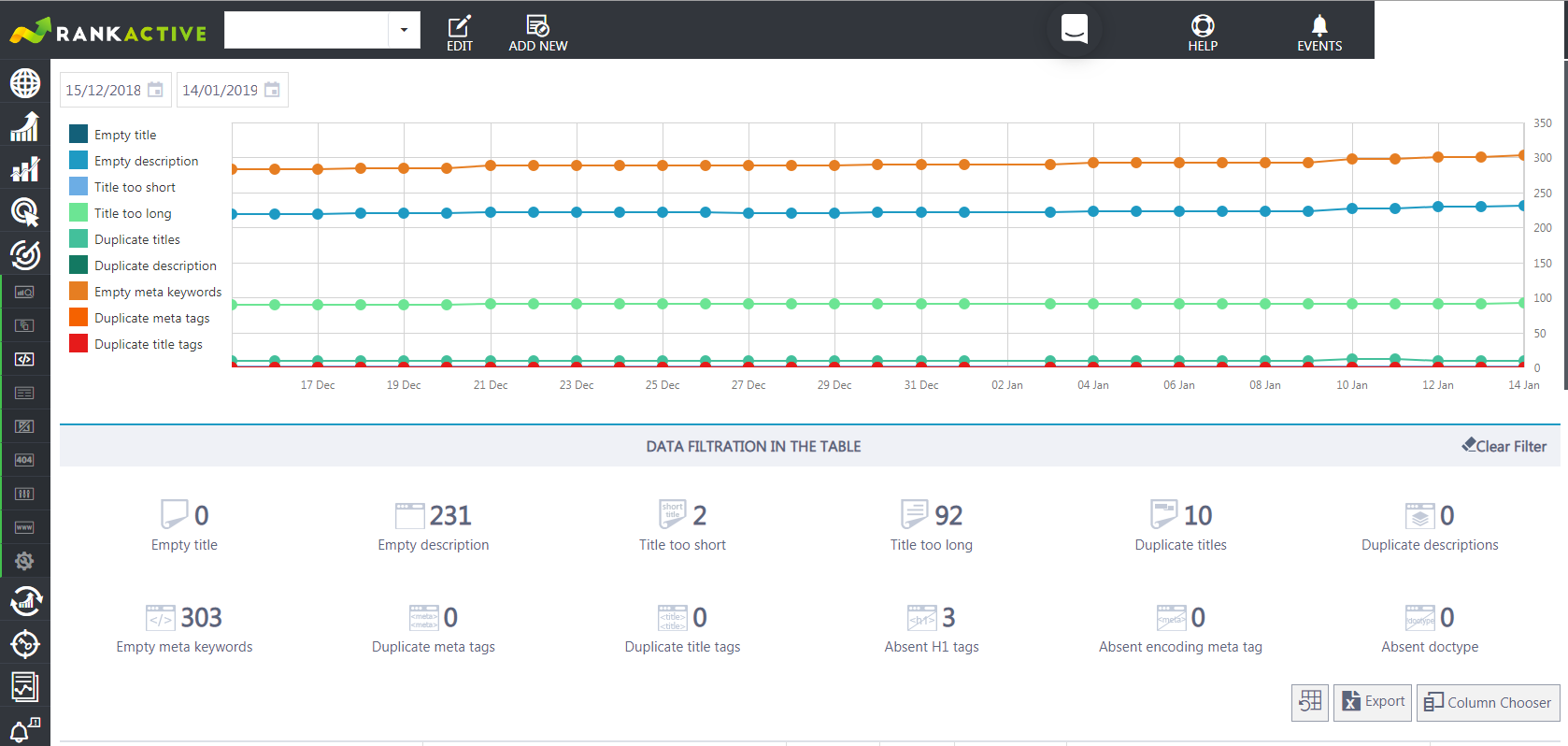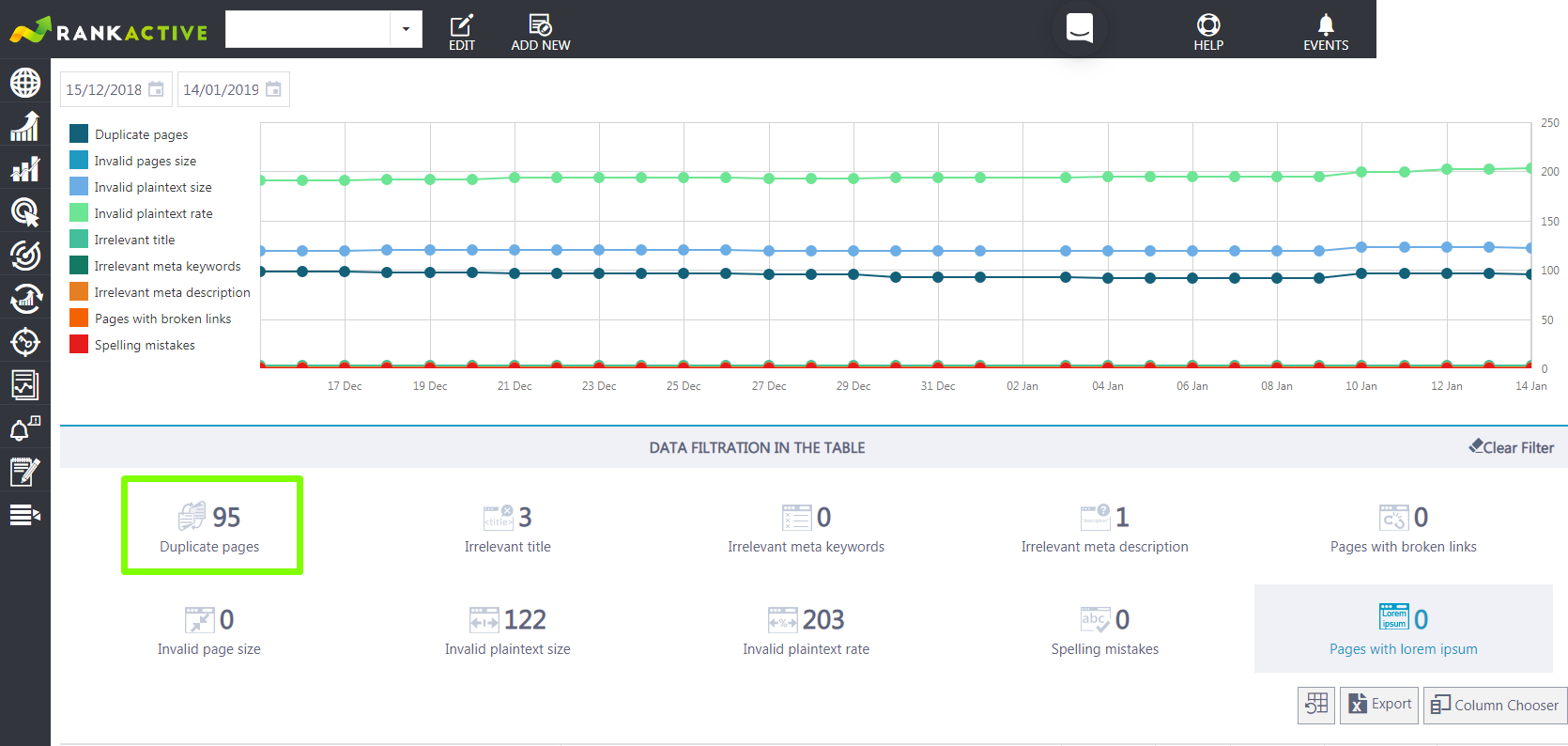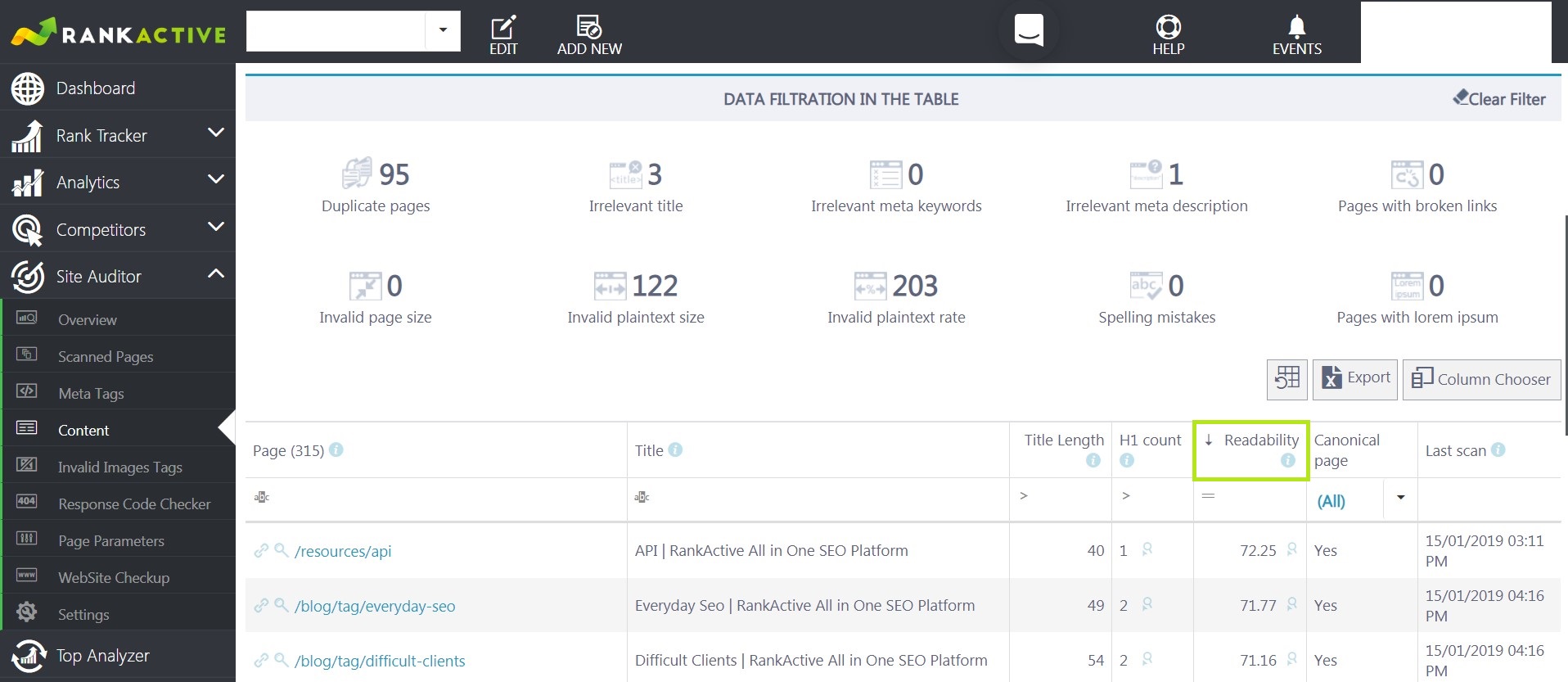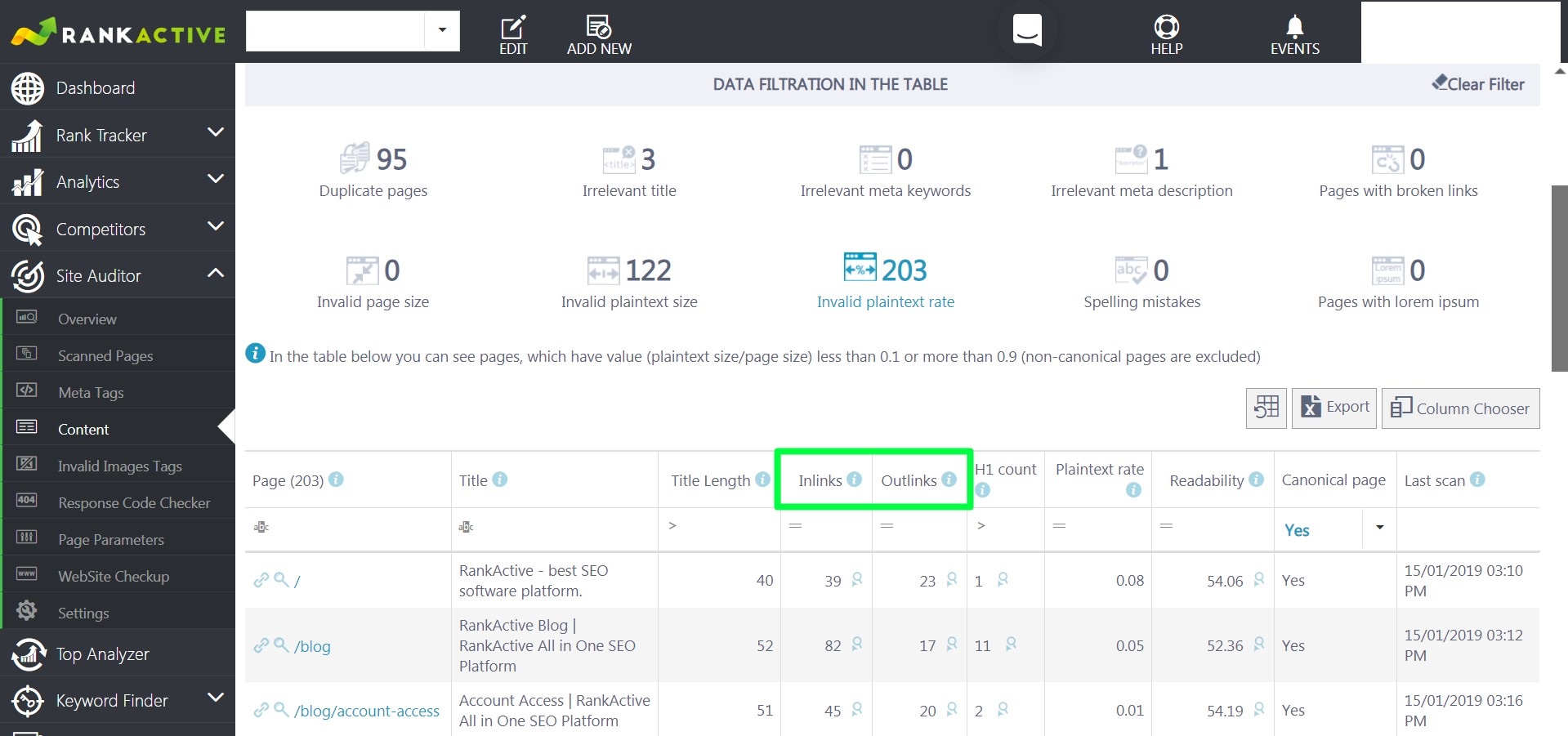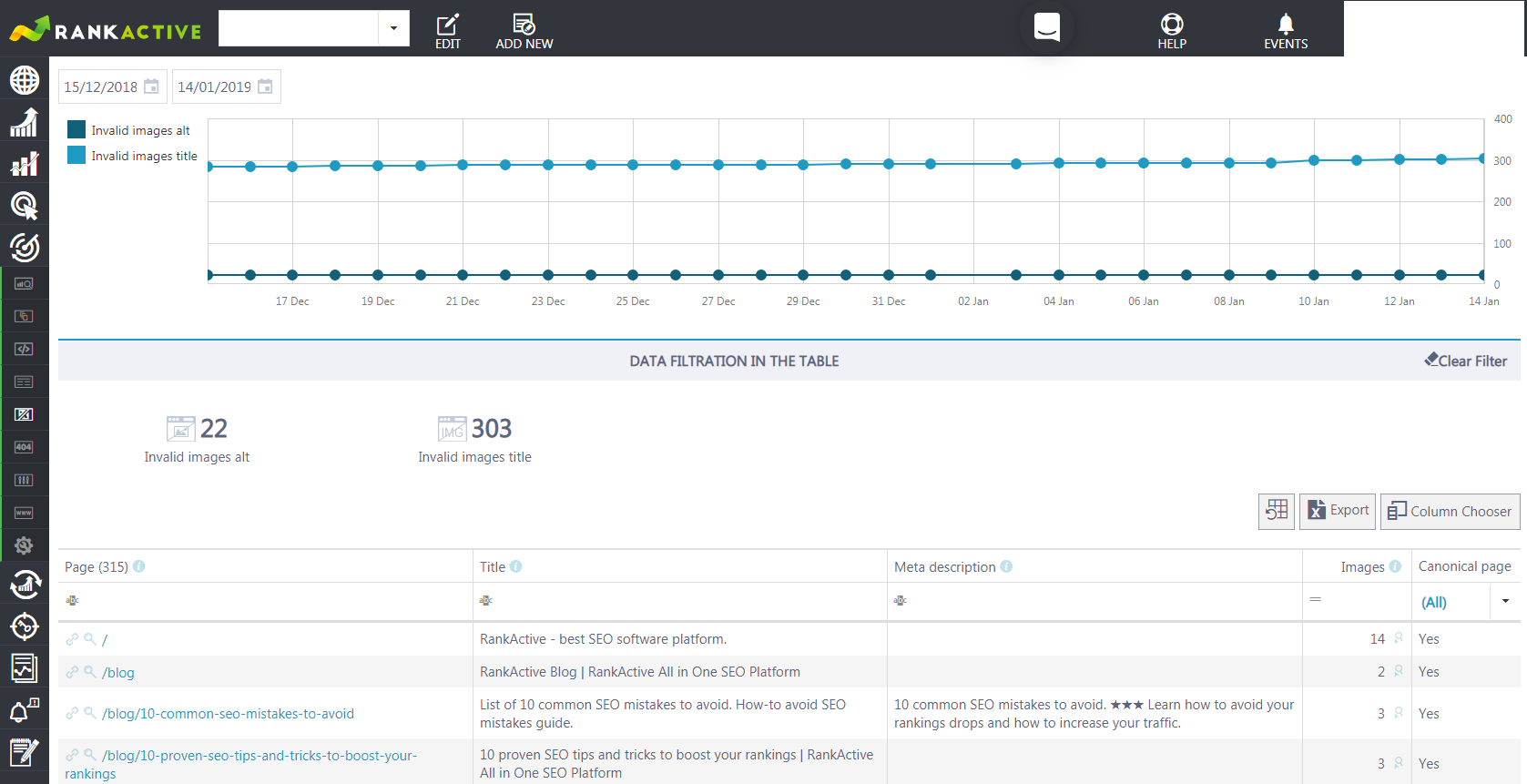On-Page SEO Best Practices: How to Make Sure Your Website Is Optimized?
18 January 2019 Leave a comment ON-PAGE SEO
On-page SEO is aimed to optimize web pages (both the source code and content) in order to increase their rankings and attract relevant traffic in Google and other search engines. The best part about it is that it refers solely to your website, so you have full control over it, and you can start improvements right now.
At the same time, it’s easy to stumble and make mistakes if you don’t have a guide by your side. For you to know where to start, we’ve gathered the best practices of the on-page optimization in one article. Let’s do things right.
1. User-Friendly URLs
We’re beginning from the top of the web browser – the URL field. If you create a new page or modify an existing one, the first thing to check is the page’s URL. Lots of entrepreneurs focus on the content and neglect this part at the beginning, but you shouldn’t make the same mistake. Remember that website visitors will see a URL, and they’ll give more credit to the optimized address. Plus, URLs are one of the factors that have an influence on Google rankings. You can include a keyword in the page’s address, and search crawlers may consider it as a relevant one.
Best practices:
- Remove default URLs everywhere. Your CMS would generate something like this: https://example.com/hsghsdg542348.html Instead, there can be such address: https://rankactive.com/blog/6-huge-seo-trends-of-2019. Which of the URLs seems more understandable to you?
- With RankActive, you can check SEO-friendly URLs on your website. Open Site Auditor, and you’ll see the number of not SEO-friendly URLs right in the Overview. You can click on this window and check detailed information.
- Depending on the page, you can play around with short URLs that contain only keywords. Experts believe it has a good impact on the web page’s rankings.
2. Title Tags
Let’s say you already have a list of keywords for your website, and we can start making use of them. In case you have any questions about keywords, try out Keyword Finder from RankActive. This is one of the most advanced tools available on the market, which means you’ll be able to find unique keywords for any purposes.
Now, you’re all ready to move from the URL field to the title tag. It informs Google crawlers what the page is about, that’s why you should put a keyword here. These tags have a certain structure, but many website owners forget about it. Also, the common mistake is to double title tags for 2-3 pages. So, what are the right things to do?
Best practices:
- Stick to this structure creating a title tag: the main keyword – an additional keyword | company’s name. Punctuation is important here too. As you can see, there’s a dash between the main and additional keywords and a pipe after them, before the company’s name. Here’s an example with one keyword:
- Title tags should be unique on every web page.
- RankActive has prepared a full report on website tags for you. There is the Meta Tags section in Site Auditor, where you can check duplicate titles, their length (whether it’s too short or long), empty descriptions, etc. Speaking of descriptions, it’s another helping tool for on-page SEO (see the next point).
3. Meta Descriptions
These descriptions speak to your potential visitors rather than to the search engine. From the description, users get a brief overview of the page and decide whether they want to follow the link or not. Neglecting this step or, on the contrary, writing too long meta descriptions can have negative consequences.
Best practices:
- Using keywords is just as important as writing a good description. Keywords will help web users find your page, and a compelling text will make them visit your website.
- There’s no need to stuff your description with numerous keyword phrases – using 1 keyword is usually enough.
- There’s a list of non-alphanumeric characters you should keep in mind and never use them in meta descriptions because Google will cut them out anyway:
` ~ $ ^ + = < > “ - You have no more than 160 characters to describe the page in full.
- There should not be any description duplications throughout your website, especially if a page appears in SERP.
- To check which pages on your website already have a description and also the length of this description, go to the Content section of Site Auditor and click on Column Chooser. Pick Meta Description and Meta Description Length and drag them to the general sheet.
4. H1 and H2 Tags
There is only one header tag (H1) on the page, and you should use it wisely. Basically, this headline is a page’s subject that attracts the attention of visitors, but not all website owners and content creators get all the benefits from it.
If the text on the page has several paragraphs, it’s a good idea also to use H2 tags in the text. They make content user-friendly, i.e., so that users won’t get overwhelmed with a huge amount of information – they will see logical text parts. Obviously, headlines serve as a useful instrument to decrease bounce rates and grow the time users spend on the website.
Best practices:
- The most relevant keyword phrase must be used once in the H1 tag to drive traffic to the page.
- H2 tags are used on the pages with several sections.
- Keywords in H2 tags are applicable only if they reflect the page’s content. At the same time, it’s not necessary to use a keyword in each H2 tag – you can leave some space for creativity.
- Use the same Meta Tags section in Site Auditor we’ve mentioned already and check absent H1 tags on the website.
- In the Content section, you can find the exact number of H1, H2, and H3 tags on every page of your website. This time, choose H2 and H3 count from Column Chooser to see the whole picture.
5. Relevant Content
Now let’s talk about what makes the most space on the page – the content per se. Google rules become stricter every year about it. As a result, one of the SEO trends in 2019 is a perfectly-looking and relevant content. There are two biggest mistakes to avoid: duplicating content on several pages and using too many keywords in the text. In both cases, the website can be penalized by Google.
Best practices:
- Create content which reflects the main keyword phrase of the page. The text should be useful for a reader, thoroughly edited, and 100% unique.
- If you’re going to publish content on a third-party website, be it a press release or a blog post, don’t ever copy it from your website. You should rewrite it to create a unique material. RankActive is coming to help again with its Content section in Site Auditor. Here you will find the number of duplicate pages and lots of other useful info.
- Consider publishing solid blog posts with over 1,500 words: tutorials, guides, lists of tools and resources, etc. Such articles are considered as an evergreen content useful for readers even months after publishing.
6. Smooth and Easy Reading
Another important thing about website texts is their readability. There are certain rules that transform the text canvas into a good-looking and pleasant reading. Even if you worked hard on creating relevant and informative content, it would pass unnoticed without proper formatting. Moreover, Google now recognizes bulleted or numbered lists and displays them in featured snippets.
Best practices:
- Long paragraphs promise boring reading, so you should avoid them. The recommended length is around 3 sentences. And sentences, in their turn, should be short and clearly explain the author’s thought.
- Use all possible means to attract attention and underline keywords: H2 tags, bolding, numbered and bulleted lists, etc.
- At the same time, the text should look like an article and not a pile of lists and terms, so do not overuse them in a text.
- To check content readability on every page of your website, use the Content section again. Here you will find the Readability column, and you can sort pages according to their readability level (show the highest or lowest readability level first).
7. Internal Linking
Internal links lead from one page on your website to another, i.e., no other web sources are involved in internal link building. What’s so special about them? First off, they make website navigation much easier for visitors. Also, internal links help define the website’s hierarchy.
But the most valuable thing is the link value. The more links you have on the page, the bigger the value will become. This value is divided between all links on that page. And if the value is big enough, search engine crawlers will find new content faster.
The problem is not everyone knows how to manage links on different pages.
Best practices:
- The easiest practice is to check if the links look natural on the page and lead to the useful and relevant content.
- Every page with main website categories and subcategories should have links allowing users to go back (to the main category) or move further (to another subcategory, for example).
- Every blog post should have several links leading to relevant posts or categories.
- Add an HTML sitemap on your website – it helps Google learn your platform better.
- Check all broken links and update them if necessary.
- In the Content section of Site Auditor, you can also find the number of internal and external links on web pages. Add Inlinks and Outlinks columns to the sheet from Column Chooser.
8. Alt Tags for Images
Alt tags describe every image on the web page. This is what appears on the screen if a file wouldn’t upload properly, so it is helpful not only for SEO but for an overall understanding of the text. If a website visitor uses a screen reader, alt tags would be the only thing helping to understand the content better.
Website owners can also benefit from alt tags as the image search becomes more and more popular among users. Obviously, images can become another source of traffic.
Best practices:
- Don’t miss any image on the web page and name each one. The names should be short and descriptive.
- If this is the main image of the text, include a keyword in the alt tag.
- Use dashes between the tag’s words instead of underscores (how-to-grow-traffic, not how_to_grow_traffic).
- This is another place where you can’t use non-alphanumeric characters.
- Do you want to know every invalid image alt on your website? RankActive knows it – just check the Invalid Images Tags in Site Auditor.
9. Optimized Videos
Video content is extremely engaging. It gives users new impressions and often has lots of useful info inside. Of course, not every web page requires video content, but if you decide using it, opt for educational or emotional materials.
For instance, the RankActive website has lots of videos as there’s no better way to explain the main aspects of the product’s features. And even if videos fit web pages perfectly, they should be optimized in the right direction.
Best practices:
- First of all, videos must match text content. Don’t add videos just because it’s time to add something new to the website – it should bring value, so quality must be your main priority.
- The video title should be short and contain a keyword – use practices we’ve covered in the 2nd point (Title Tags).
- Thumbnails matter a lot. As we perceive information mostly with eyes, a good-looking video thumbnail can play a bigger role than the title above. It should be a high-quality image reflecting the video’s title.
- Add subtitles if possible. Users would appreciate this effort because some of them review websites on the go, and they may not have headphones by their side.
Now You’re Ready for On-Page SEO Success
Every element on the web page can bring you traffic and increase conversion rates. All you have to do is to use the benefits offered by the best SEO practices. Starting from URLs and title tags up to the image optimization – all of it contributes to the final result.
And don’t forget that only reliable SEO tools help you constantly monitor the website’s tags and content. Entrust RankActive with your on-page SEO – it will provide all necessary information and show the weak spots calling for improvements.
Tags: on-site SEO, Site Auditor
Like this article? There’s more where that came from.
- 4 Steps Guide to Using Google Analytics for Social Media
- Setting up of the trigger to be notified when your ETV reaches the goal
- How to Get Out of Google Sandbox and Do It Quickly?
- Geolocation Redirect 101: How to Secure Your SEO Localization Efforts?
- Your Ultimate Guide to SEO Reporting with RankActive
- Your 7-Step Guide to Increasing Page Speed




